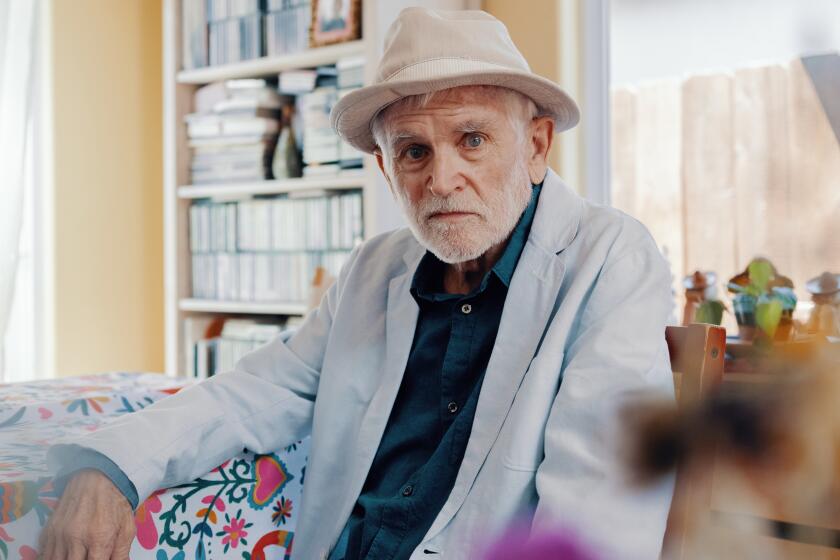The bond of brothers
- Share via
“The good luck of having a brother,” Tobias Wolff writes, “is partly the luck of having stories to tell.” “Brothers: 26 Stories of Love and Rivalry,” is chock full of them. Culled from essays, short fiction and excerpts from longer works, they describe the mysterious and bedeviling ties that bind male siblings together.
The personal essays work the best because they are quick to establish the parameters that govern fraternal relationships: younger vs. older, close in age vs. far apart, small families vs. large, the hundred-and-one attributes that Phillip Lopate calls “the narcissism of small differences.”
With this information out of the way, the essayists proceed with their take on the other one: the golden boy, the problem child, the prodigal son, etc. The drama between brothers tends to follow a familiar script that comes down to the competition for parental love -- especially when that love is meted out in miserly increments.
In an essay co-written by John Cheever’s sons, Benjamin and Fred, the younger of the two identifies the three things that constitute brotherhood: blood, memory and the problems they share. The notion that a common problem plays such an important role is interesting, but it raises the question: “Problematic for whom?”
“Family stories are always fluid, and to be emotionally exact is to be inconsistent,” warns Geoffrey Wolff in an essay about the troubled relationship he and his more well-known brother, Tobias, had with their erratic father. What makes the essay so interesting is that it’s paired with his brother’s account of the very same events. Taken together they suggest that brothers -- maybe more than fathers -- measure how close to the tree they’ve fallen.
No matter the similarities (or perhaps because of them), there comes a time when the brother must establish his own identity. It’s a crucial step in the development of a sense of self. “A brother shows you who you are,” writes David Kaczynski, “and also who you are not. He’s an image of the self, at one remove; but also a representation of the ‘other.’ ”
These distinctions are even more essential when the brother’s behavior becomes aberrant, antisocial, even murderous, as in the case of the author’s infamous brother, Ted Kaczynski, who was brought to justice when David detected similarities between the so-called “Unabomber’s Manifesto” and his brother’s letters from the Montana wilderness.
In his stirring and moving essay, David describes the dissolution of his relationship with Ted and the brotherly bond he now shares with one of the men his brother tried to kill. They share blood, memories and problems -- just not the kind either could have ever imagined.
And there are always problems. Mikal Gilmore, whose convicted double-murderer brother, Gary, was shot through the heart by a firing squad after the death penalty was reinstated in the late 1970s, writes movingly about his other brother, Frank. While in the aftermath of their brother’s horror, Mikal found himself through writing, Frank succumbed to a life of drifting and despair. When the brothers are reunited, Mikal is astonished by their willingness to make amends. “I had never truly understood the depths of this man’s heart or the expanse of his loneliness, but maybe it wasn’t too late. Maybe, just maybe, I was ready to learn something worthwhile about the fidelity born of blood.”
Daniel Menaker calls this the “kernel of love inside the hard shell of rivalry.” All brothers carry this with them and plant it within their offspring, one of the many reasons why children from large families are often better prepared for the challenges of parenthood, because they’ve lived though the intense clinging, petty jealousies and bitter rivalries that are manifestations of brotherly love.
The most practical bit of advice in the anthology comes from Dominick Dunne’s essay “A Death in the Family,” about his brother John Gregory Dunne, whose sudden passing his widow, Joan Didion, chronicled so compellingly in “The Year of Magical Thinking.” For many years, the relationship between the two brothers, both celebrated writers, was so toxic they wouldn’t speak to each other, even at parties. Then one day they met by chance in a hospital, where they both happened to be giving blood samples. Alarmed by the other’s presence and concerned about their well-being, they couldn’t help but be cordial. “The thing that made our reconciliation so successful was that we never tried to clear up what had gone so wrong. We just let it go. There was too much about each other to enjoy.”
“Brothers” reminds us that the similarities brothers find so infuriating in their youth and, for some, long into their adulthood, ultimately yields to a kind of comfort and consolation they won’t find anywhere else. Though the accounts of the battles fought may differ, they’ve been through the trenches together and shed the same blood. Who else but a brother can understand that?
--
Ruland is the author of the story collection “Big Lonesome.”
More to Read
Sign up for our Book Club newsletter
Get the latest news, events and more from the Los Angeles Times Book Club, and help us get L.A. reading and talking.
You may occasionally receive promotional content from the Los Angeles Times.







